All four of the badminton giants have a chance to win the men’s doubles gold in the upcoming Asian Games as the top pair from each constitute the four favourites, but who else will be there to challenge them?
By Adrian Kok, Badzine Correspondent. Photos: Badmintonphoto
Malaysia, Korea, China and Indonesia have always produced marvellous men’s doubles talents. In the past four years, with only one exception, the All England, the World Championships, the Olympics, the Super Series Finals, and the Asian Games titles (along with seven of those runner-up spots) have all been divided among just four pairs: Koo Kien Keat / Tan Boon Heong (MAS), Jung Jae Sung / Lee Yong Dae (KOR), Markis Kido / Hendra Setiawan (INA) and Fu Haifeng / Cai Yun (CHN).
However, let’s us not rule out Japan. The guidance for the legendary Park Joo Bong will pose a threat to the other four badminton giants. In recent times Japan players have step in their game and have been winning titles. So, too, have the #2 pairs from the ‘big four’ and many others as well. Let’s take a look at how the challengers are placed within the draw.
The title defender from Malaysia Koo Kien Keat and Tan Boon Heong (pictured) won the Gold medal when they formed as a pair by Rexy Mainaky four years ago. Four years have passed and they are still very strong contenders for the gold medal. Koo/Tan will have a smooth path until the quarter-finals, where they will meet Ko Sung Hyun and Yoo Yeon Seong of Korea. The other Malaysian pair of Mak Hee Chun and Tan Wee Kiong, who have been in the media limelight for their good performance, will be same half of the draw with Olympic champions Markis Kido and Hendra Setiawan of Indonesia.
Korea’s sensational pair of Jung Jae Sung and Lee Yong Dae (pictured) was bronze medallist four years ago in Doha. They lost a three-game nail-biter to Luluk Hadiyanto and Alvent Yulianto of Indonesia. Lee, who is still recovering from an elbow injury, will have to push an extra mile, as they will be facing Fu Haifeng and Cai Yun of China in the quarterfinals.
Ko Sung Hyun and Yoo Yeon Seong will too have an uphill task, as they will be meeting the defending champions of Koo and Tan, but first they have to get past Japan’s Hirokatsu Hashimoto / Noriyasu Hirata, who beat both Ko/Yoo and Koo/Tan in their last meetings, on their way to the Indonesia Open semi-finals in June.
Current Olympics gold medallists Markis Kido and Hendra Setiawan of Indonesia also settled for bronze medals four years ago. They will be in the same half of the draw with Mak and Tan of Malaysia, who shouldn’t be looked at lightly as their recent good performance will prove the be a challenge for Kido and Setiawan. Also in their quarter, however, are Chinese Taipei’s Chen Hung Ling / Lin Yu Lang, Japan’s Hiroyuki Endo / Kenichi Hayakawa and Thailand’s high-flying youngsters Bodin Isara / Maneepong Jongjit.
Doha silver medallist Alvent Yulianto Chandra will now partner Mohammad Ahsan instead of Luluk Hadiyanto. This pair’s first hurdle is from Chinese Taipei, the doubles pair of Fang Chieh-Min and Lee Sheng Mu, who cooled down after their summer hot streak in the absence of Jung/Lee and the Chinese but who are still very dangerous.
China, which is always regarded as the biggest badminton super power, has also sent two mighty pairs. They will be playing on their home ground and both have a strong chance to win the gold medal. The pairs of Fu Haifeng / Cai Yun (pictured) and Guo Zhendong / Xu Chen will be faced with many difficulties. Fu/Cai will meet Jung/Lee in the quarter-finals and Guo/Xu will face Fang/Lee in round two.
Out of all of them the Malaysian pair of Koo Kien Keat and Tan Boon Heong will have the heaviest pressure on them. They will be going all out to defend their title, but the other pairs will also be eyeing the gold medal.
![ASIAN GAMES 2010 MD Preview – Clash of the Doubles Titans All four of the badminton giants have a chance to win the men’s doubles gold in the upcoming Asian Games as the top pair from each constitute the four favourites, […]](http://www.badzine.net/wp-content/uploads/Newsflash-thumbnail.png)
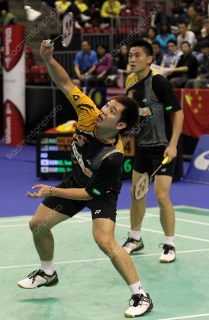
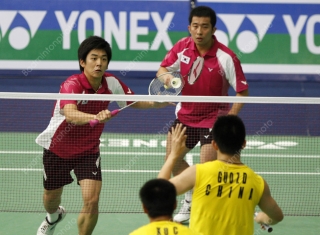
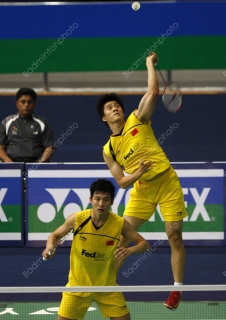
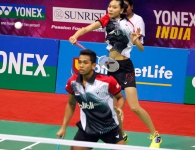
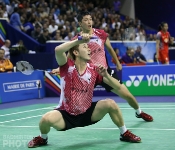
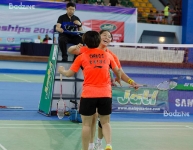

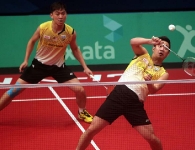
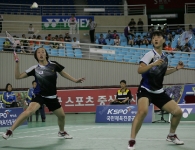
Leave a Reply